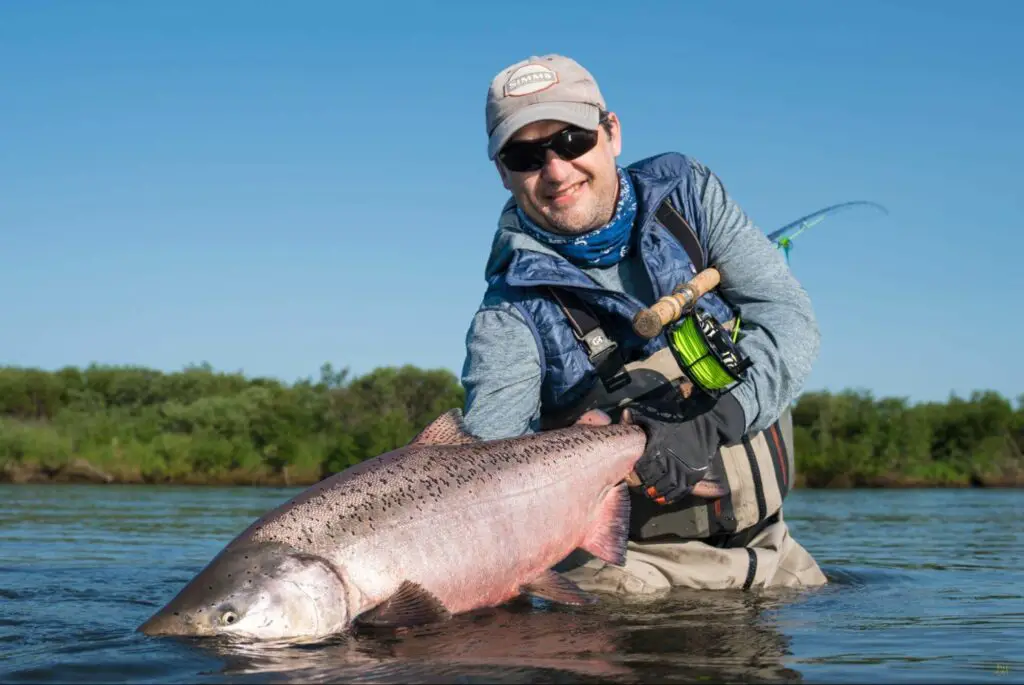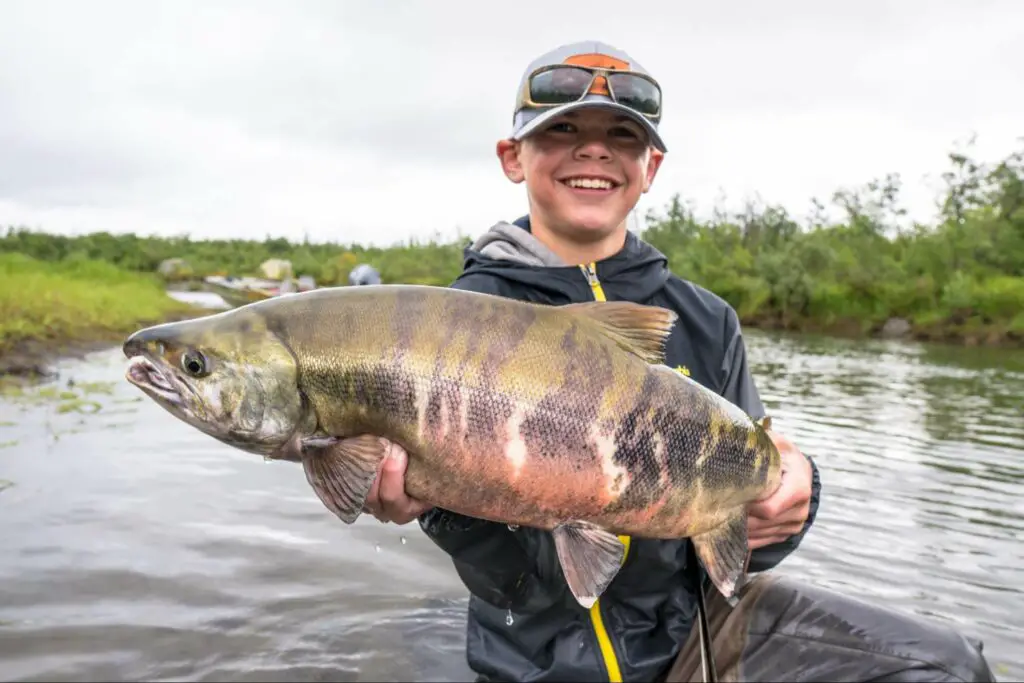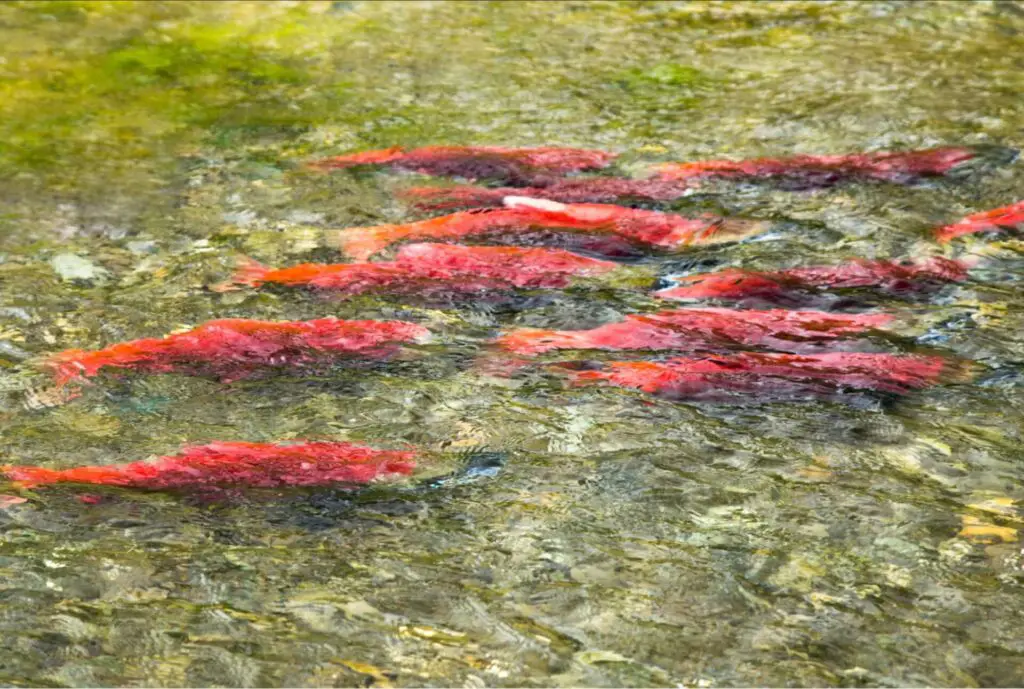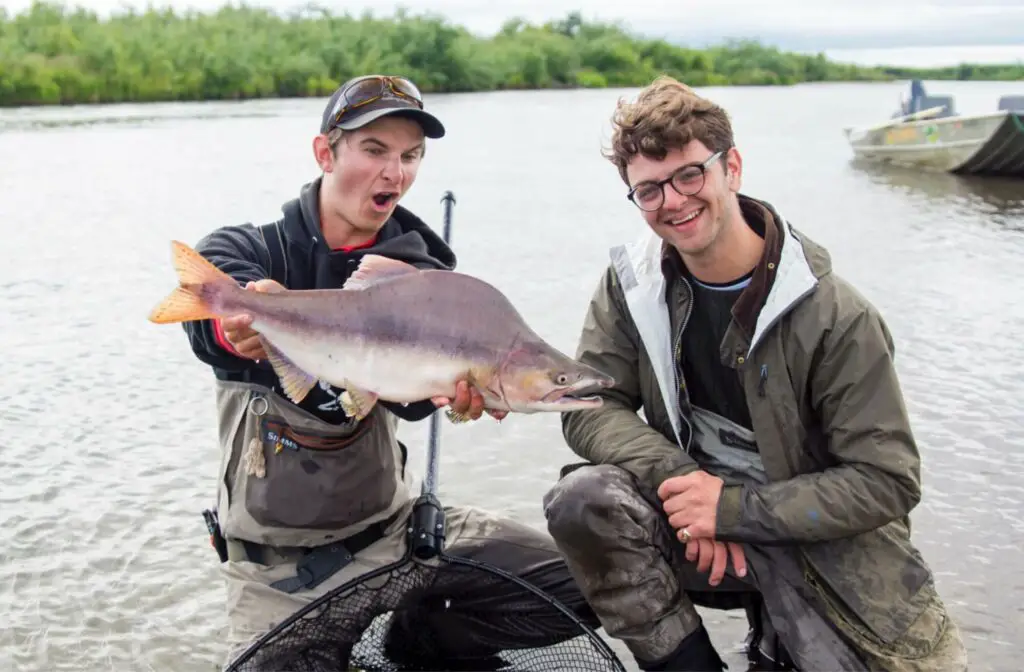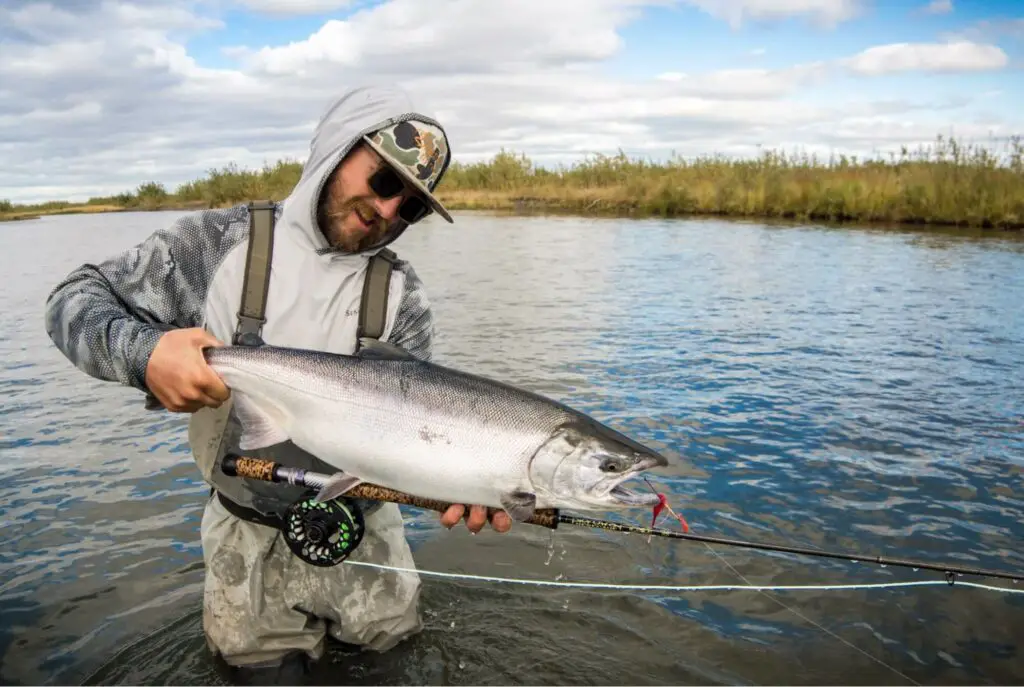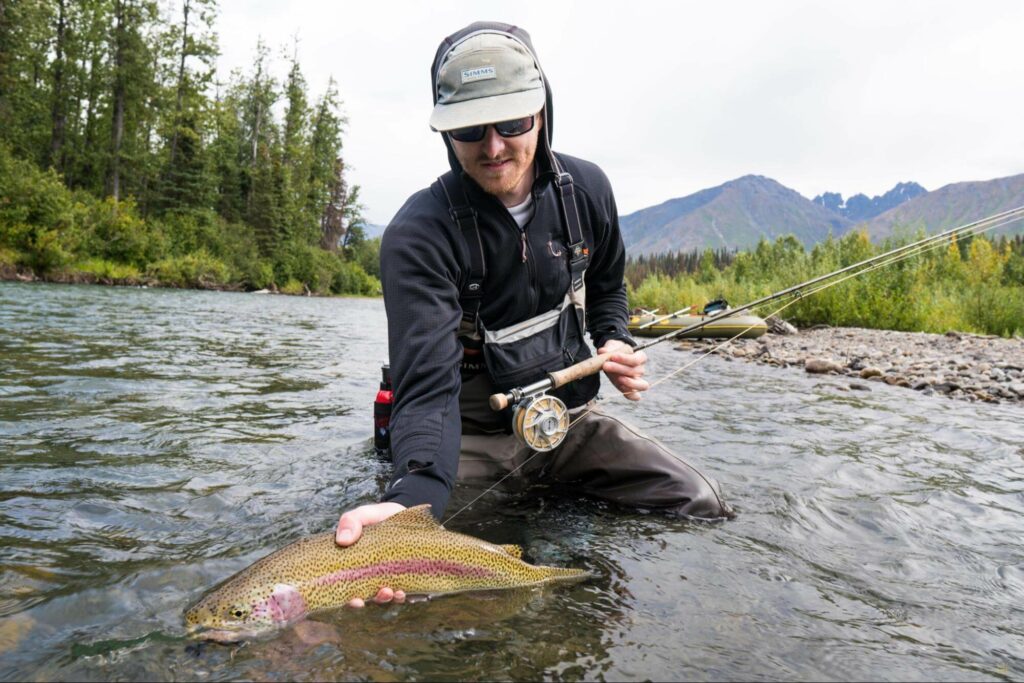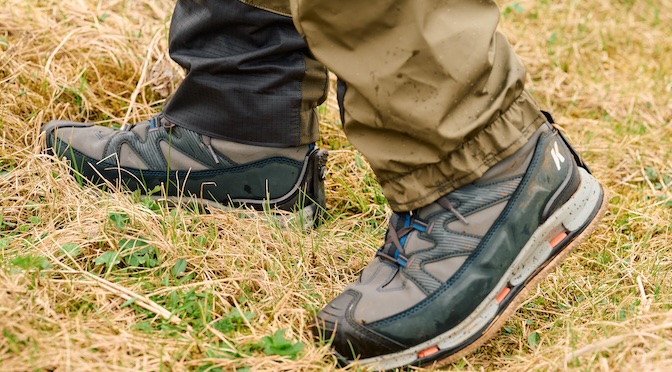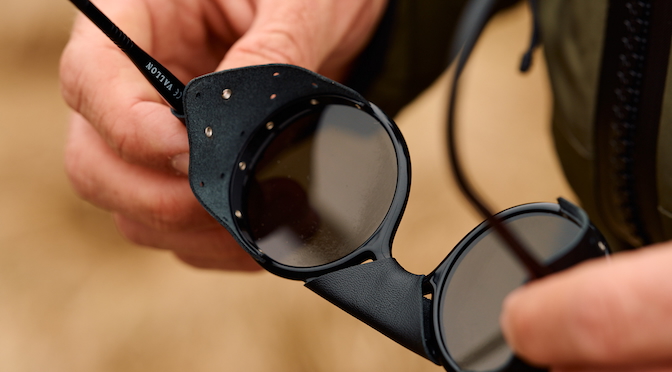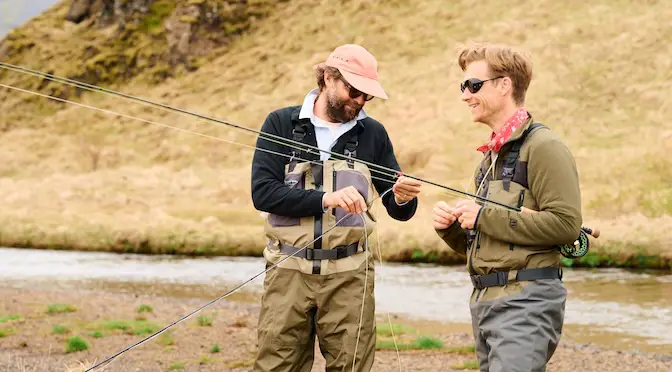Last updated on December 3rd, 2022.
Alaska is a giant state – it’s a fifth of the size of the entire lower 48. With so much territory, it boasts an incomparable diversity of watersheds and species fish for.
First time Alaska anglers often find the state’s size and diversity make it intimidating to start planning a fly fishing trip. So, where should you start? We strongly believe that there are two important factors that will immensely help with trip planning. Determine your budget, and decide what fish species you want to catch the most!
Planning your Fly Fishing Alaska Trip
Fly fishing Alaska’s road system is great for DIY anglers and those on a budget. It gives access to some incredible fisheries, especially around the Kenai Peninsula and Denali Parks Highway. The road system fisheries draw more crowds, but the fishing is still great!
Other anglers prefer the remote all-inclusive fishing lodge experience. Going this route can range in both cost and accommodations. Lodges vary from established tent camps to resorts with white dinner linens and TV’s in guest rooms.
Many of the more prestigious lodges are located around the Bristol Bay region. Daily fly-outs are popular at these lodges. Fly-outs provide opportunities to experience different rivers each day – great for new Alaska anglers.
Favorite Lodges for first trips:
While Alaska does boast a vast diversity of fish species, not every target species has peak fishing at the same time. It is best for anglers to decide what type of fish will be their primary focus to begin planning a trip. Rainbow trout, arctic grayling, pike and dolly varden can be caught year-round in Alaska. Whereas different types of salmon show up throughout the summer and are often the star species for traveling anglers.
Alaska Fly Fishing Species Overview
Five species of pacific salmon return each summer to spawn in Alaska’s rivers. Not all rivers see every species, but some rivers do see strong runs of all five. The run timing of each salmon species varies slightly from season-to-season and river-to-river. However, the five Alaskan salmon species typically return in this order throughout the summer; king salmon, chum salmon, sockeye salmon, pink salmon, and then coho salmon.
King Salmon
King salmon are known for their large size and strong fights. Undoubtedly the largest of the Alaskan salmon, the Alaska State record weighed a massive 97 pounds from the Kenai River in 1985. On some rivers, Kings start showing up in late May and keep running through mid July. Anglers who come to fish specifically for king salmon usually target the month of June.
Unfortunately, stocks of king salmon are taking a plunge globally. Due to this, the Alaska Department of Fish and Game has, in recent years, been forced to shut some rivers down emergently. This decision is made when king salmon escapement goals have not been met (keep an eye out for emergency orders and closures).
Gear for Kings:
– 10+ weight single hand fly rod, or 9-10 weight spey rod
– Reels must have a strong drag!
– Sink tip fly lines are often used
– 20 lbs maxima fly leader
– Flies in colors of pink, chartreuse/blue, and black/blue work great
Chum Salmon
Most guides in Alaska will tell you, chum salmon are the hardest fighters pound for pound. While they are given a bad stigma for their soft meat, they should not be overlooked by the catch and release angler!
Chum salmon enter freshwater with a chrome bright appearance. They quickly turn into crimson-striped and toothy fish that chase flies aggressively! Chum will begin showing up in rivers in early June and peak in July in most river systems. The end of the chum run is August.
Gear for Chums:
– 8-9 weight fly rod and reel
– Floating fly line
– 15 lbs maxima leader
– Pink flies with dumbbell eyes are the go-to! (Try a starlight leech)
Sockeye Salmon
Sockeye, or red salmon, are the iconic fish of Alaska. 2022 saw yet another record breaking return of sockeye in Bristol Bay! Fly fishing for sockeye is wildly popular for those anglers wishing to keep salmon for the freezer.
While it is up for debate, most Alaska guides agree that sockeye salmon do not actually eat flies. To catch sockeye, anglers ‘gink’ or ‘floss’ sockeye – essentially, use snagging methods to hook them in the mouth. Once hooked, sockeye take off! Anglers expect to see backing with their blistering and acrobatic runs! This is a fun fishing method for large groups wishing to fish together.
Gear for sockeye:
– 8-10 weight fly rod setups
– Leaders are 15 -20 lb
– Split shot sinkers are needed
– Bucktail flies in bright colors are most common
Pink Salmon
Pink salmon, or humpies, return in strong numbers each year. In Alaska, the returns are stronger on even numbered years. They get the name “humpies’ as the backs of males morph into giant humps – part of their spawning characteristics. Prime season is July and August.
Gear for pinks:
– 8-9 weight fly rod and reel
– Floating fly line
– 15 lbs maxima leader
– Weighted pink & purple flies are all you need
Coho Salmon
Coho, or silver salmon, are the last species to return to the rivers each year. They can be caught from late July through September in most rivers. Coho are likely the most popular species for fly anglers. Fly fishing for them can be very visual and they are known for their explosive leaps when hooked!
Most coho in Alaska weigh 8-12 pounds and are great for fileting for the freezer. Rivers in western Alaska are known for massive runs of coho. In fact, it’s not uncommon for anglers to catch 30 – 40 fish a day if timed correctly in this part of the state.
Gear for Coho:
– 8-9 weight fly rod and reel
– Floating fly line
– 15 lbs maxima leader
– Pink flies with dumbbell eyes are the go-to! (It’s hard to beat a starlight leech)
Trout
If you’ve ever caught a rainbow trout in your home waters, prepare to have your mind blown by how much more powerful Alaska rainbows are! These rainbows thrive on pure protein, and not insects like lower 48 trout. Sculpins, mice, salmon eggs, and salmon flesh make up the majority of an Alaskan trout’s diet. These fish get huge and fight hard! Landing a 30” trout in Alaska is not uncommon!
While trout can be caught all year round, certain windows are best for targeting them. These ‘prime-times’ can be very subjective to the rivers you are fishing. For example, lake systems in Bristol Bay see a unique phenomenon of trout busting salmon fry as they out-migrate to the ocean in June.
Otherwise, fishing just gets better and better the later into the summer you trout fish. As more salmon spawn, there’s more food in the river. Trout key in on spawning salmon and eat their eggs like an endless buffet. Fishing beads that mimic salmon eggs is a common technique across Alaska – it works great for dolly varden too!
Gear for trout fly fishing Alaska:
– 6-7 weight fly rods and reels
– Floating fly lines for nymphing and streamer fishing
– Leaders are usually tapered to 12 lb fluorocarbon tippet – depending on the fishery
– Mice patterns, sculpin patterns, trout beads size 6-10 and flesh flies are frequently used
Conclusion on Fly Fishing in Alaska
As you can see, the opportunities for Alaska fly fishing are endless. In the end it comes down to what species you want to catch and your budget. Make sure to bring good gear as the power of these wild fish should not be underestimated.
Greg Houska is an experienced Alaska Fly Fishing Guide.

